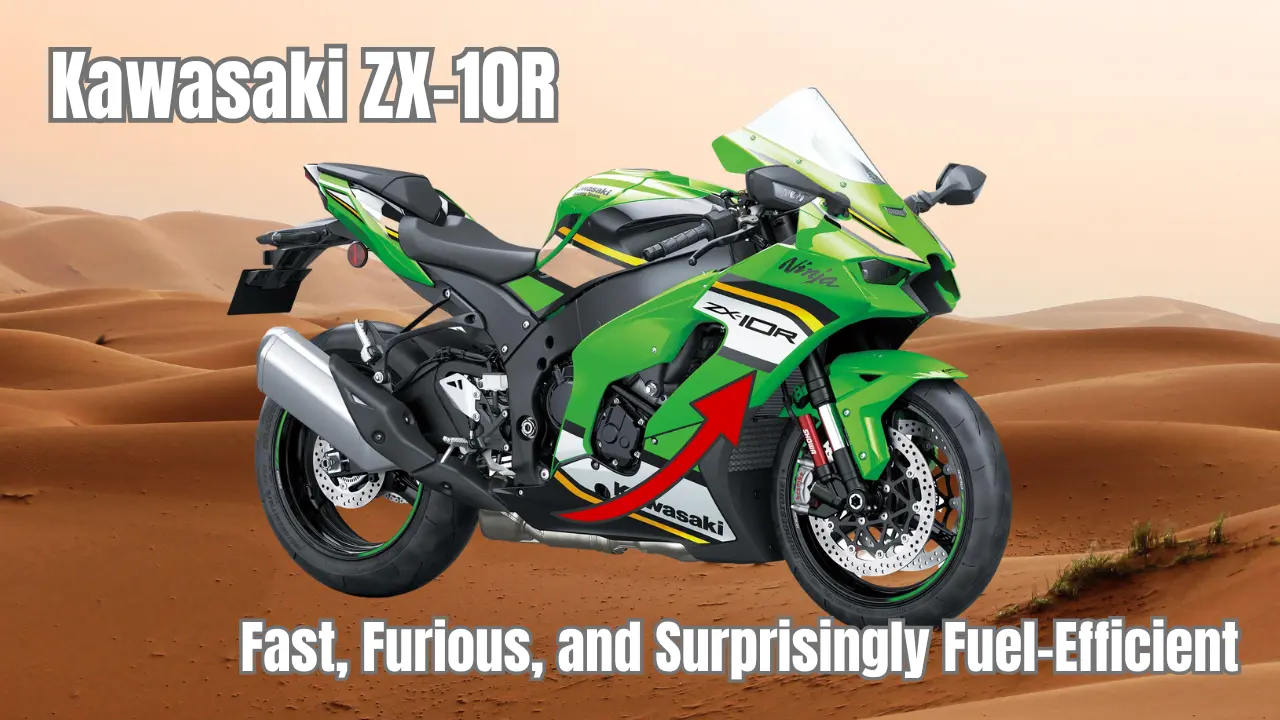Let’s cut the fluff. If you’re eyeballing the Kawasaki Ninja ZX-10R, chances are you’re not just looking for a ride—you’re chasing something faster, louder, and a hell of a lot more exciting than your average 9-to-5. This isn’t the kind of bike you buy to save gas on your commute. It’s the kind you buy because the sound of a 998cc inline-four redlining at 13,000 rpm makes you feel alive.
But here’s the thing: for all its firepower and race DNA, the ZX-10R doesn’t cost as much as you’d think. And believe it or not, it won’t empty your tank in 20 minutes either. Let’s break down what you’re really getting for your money—and whether it makes sense for your life, your wallet, and your weekends.
How Much Does the Kawasaki ZX-10R Cost in 2025?
Straight talk: the ZX-10R sits in that sweet spot between affordable dream and luxury toy. Right now, you’re looking at a price range of $17,000 to $18,000, depending on taxes, shipping, and how persuasive your dealer is.
Compare that to some of its rivals—the BMW S1000RR, Ducati Panigale V4, or Yamaha R1—and suddenly, the Ninja looks like a pretty good deal. You’re not sacrificing performance. You’re just not paying a premium for a badge.
If you strip it down to what really matters—engine, electronics, and road presence—the ZX-10R punches way above its price class. It’s a superbike built for riders who care more about how a machine feels than what logo’s on the gas tank.
Read Also: Triumph Scrambler 400 XC: Price Revealed, and It’s Surprisingly Affordable
Mileage: Will It Burn a Hole in Your Wallet or Just the Asphalt?
Let’s get one thing straight: fuel economy is not why people buy superbikes. Still, Kawasaki’s managed to strike a surprising balance here. The ZX-10R won’t sip fuel like a scooter, but it’s not the gas-guzzling monster some might expect.
On average:
- City riding? Expect about 12-13 km/l (28-30 mpg).
- Mixed city-highway use? Around 14-15 km/l (32-35 mpg).
- Highway cruising? If you’re gentle (which is hard), you might hit 16-18 km/l (38-42 mpg).
Here’s a clearer breakdown:
| Riding Conditions | Mileage (km/l) | Mileage (mpg) |
|---|---|---|
| Stop-and-go traffic | 12–13 | 28–30 |
| Mixed daily use | 14–15 | 32–35 |
| Highway or touring mode | 16–18 | 38–42 |
Is it Prius-level efficient? No. But for something pushing over 200 horses, that’s actually pretty reasonable. It’s a superbike with manners—until you twist the throttle, and then all bets are off.
What Are You Actually Paying For?
You’re not just buying speed. You’re buying an experience—something that wraps precision engineering and race-day aggression into one very green (or black) package.
This bike isn’t built for beginners. It’s designed for people who’ve grown out of their 600cc rockets and are ready to ride something more brutal—and more rewarding.
Core Specs You Should Know
- Engine: 998cc inline-4, liquid-cooled
- Power: Up to 213 hp with RAM air
- Torque: 115 Nm at 11,400 rpm
- Weight (wet): 207 kg (around 456 lbs)
- Electronics: Cornering ABS, traction control, launch control, quickshifter (up/down), riding modes
- Suspension: Showa Balance Free Forks (BFF), adjustable rear monoshock
- Display: TFT color dash with smartphone sync
Kawasaki doesn’t mess around here. Everything is tuned to give you sharp, controlled power and a ride that feels connected to every twitch of your wrist. It’s not just fast—it’s intelligent.
Who Is This Bike Actually For?
The ZX-10R isn’t your “learn to ride” bike, and it’s definitely not for lazy Sunday cruises with a cup of coffee in hand. This thing wants to be revved, leaned, and unleashed.
You’ll love it if:
- You’ve got a few years of riding under your belt.
- You live near good roads or track facilities.
- You care about speed, handling, and riding tech.
- You want a race-ready bike that doesn’t need a second mortgage.
But if:
- You’re commuting in rush-hour traffic daily…
- You prefer low-end torque over high-rev screamers…
- You’re not comfortable with aggressive riding positions…
…then you might want to look at something a little more forgiving—like the Ninja 650 or even a Z900.
Final Thoughts: Is the ZX-10R Worth It?
If you’re the kind of rider who values performance over polish, grit over glamour, and lap times over luxury—then yes. The ZX-10R is absolutely worth it. It’s fast, fierce, and built for those who ride with intent.
You won’t just own a motorcycle. You’ll own one of the most refined, respected superbikes on the planet—without paying exotic-bike prices.
Is it practical? Not really.
Is it rational? Hell no.
But is it everything you hoped a superbike would be? That’s a loud, rev-limited yes.
FAQs: Kawasaki Ninja ZX-10R
1. Is the ZX-10R street-legal?
Yes—fully street-legal, though it’s designed with the track in mind. Just don’t expect traffic to feel the same after riding it.
2. Can the ZX-10R handle long-distance rides?
Technically, yes. Comfort-wise? That depends on your back, your patience, and how many fuel stops you’re willing to make.
3. How does the ZX-10R stack up against the R1?
Both are superb, but the ZX-10R often edges ahead on value and electronics. The R1 might have a slight edge in styling and sound. Pick your poison.
4. Does the ZX-10R require premium fuel?
Yes—premium fuel is recommended to get the best performance and protect the engine. You don’t put 87-octane in a racehorse.
5. Is it reliable for daily use?
Mechanically, it’s solid. But daily usability depends more on your tolerance for aggressive ergonomics and raw power. It’s more of a weekend weapon than a daily tool.
